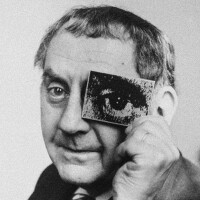L eonora Carrington, a key Surrealist known for her mystical, female-centered explorations of identity and transformation, created dreamlike worlds filled with mythological and occult symbolism. Celebrated through major exhibitions and now represented in top museums such as MoMA, the Met, the Tate, and the Peggy Guggenheim Collection, her legacy endures as one of the movement’s most visionary voices.
Leonora Carrington Biography
Populated with fantastical, hybridized creatures and esoteric symbolism, Leonora Carrington’s haunting, dreamlike paintings explore themes of identity, metamorphosis and self-discovery through a distinctly female lens. A prominent figure in the Surrealist movement, Carrington was also one of its last surviving participants. Rather than deriving inspiration from Freudian psychoanalysis, as many of her contemporaries did, Carrington’s work takes a more Jungian approach: her symbolic vocabulary is infused with imagery from mythology, folklore and the occult.
Born in 1917 in Clayton Green, Lancashire, England, Carrington studied at the Chelsea School of Art and the Ozenfant Academy of Fine Arts in London. In 1937, Carrington met the Surrealist painter Max Ernst; they soon became lovers and artistic collaborators, moving to Paris and later Saint-Martin d’Ardeche in the south of France. During this time, Carrington also associated with André Bréton, Salvador Dalí and others. One of her earliest works, Self Portrait (The Inn of the Dawn Horse) (1937–38), announced Carrington’s singular perspective; the hyena and white horse depicted in the painting would also become recurring motifs.
At the outbreak of the Second World War, Ernst, labeled a “degenerate” by the Nazis, fled to the United States. Devastated, Carrington suffered a psychotic episode and was institutionalized against her will in Spain. The experience, chronicled in her 1945 novel Down Below, left Carrington traumatized and had a lasting impact upon her work. Following her release, Carrington sought refuge at the Mexican Embassy in Lisbon, and settled in Mexico City in 1942.
In 1947, Carrington was included in an exhibition at the Pierre Matisse Gallery in New York City. Being the only female painter represented at the Gallery, she became an overnight sensation. In 1960, a major retrospective of her work was mounted by the Museo Nacional de Arte Modern in Mexico City, and in 1963 she executed a mural, El Mundo Magico de los Mayas, for the Museo Nacional de Antropologia. In the 1970s, Carrington became involved with the burgeoning Women’s Liberation movement in Mexico, and continued to write and paint prolifically. Her best-known novel, The Hearing Trumpet, was published in 1976. In the 1990s, Carrington began creating large-scale bronze sculptures. She died at the age of 94 in Mexico City.
Today, Carrington’s works are housed in the collections of the Metropolitan Museum of Art and Museum of Modern Art, New York; the Peggy Guggenheim Collection, Venice; and the Tate Gallery, London.
















